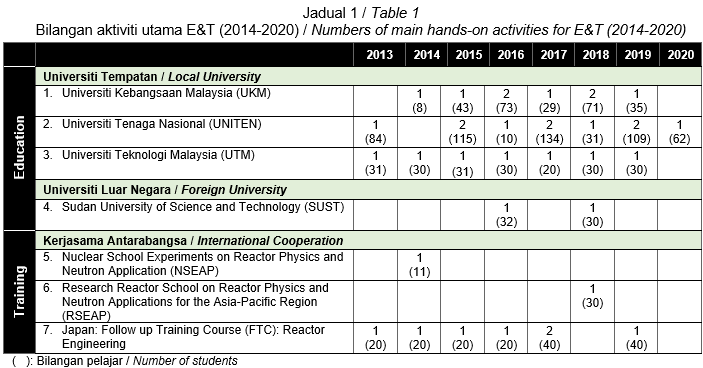NUCLEAR REACTOR TECHNOLOGY
-
PUSPATI TRIGA Reactor
The TRIGA PUSPATI Reactor (RTP) is a nuclear research reactor with 1 MW thermal energy in Malaysia. RTP was commissioned after gaining first criticality on June 28, 1982. The word TRIGA stands for T-Training, R-Research, I-Isotope production and GA-General Atomic Inc. (a supplier of TRIGA-type nuclear reactors based in the United States). Meanwhile, PUSPATI is an abbreviation of the Tun Ismail Atomic Research Center (the second name used by Malaysian Nuclear Agency from 8 October 1973 to 17 June 1983).
RTP is a pool-type research reactor, with the core located at the bottom of a seven-meter deep aluminum tank and surrounded by a biological shield based on high-density concrete. The solid fuel reactors use enriched uranium and zirconium-hydride (U-ZrH1.6). Distillation water serves as a neutron coolant and moderator, while graphite serves as a neutron reflector.
Interested in visiting RTP, please go to:
Agensi Nuklear Malaysia Visitor Registration and RTP Service Application System (u-RTP)
RTP applications are generally divided into three activities, namely research, irradiation and education and training.
Research
Main research activities currently carried out are divided into three categories:
- Safe operation of RTP and enhance its utilization;
- Ageing management program on RTP structures, systems and components (SSC); and
- Safety, security and safeguard of RTP.
Irradiation
RTPs are designed to use neutron sources in the field of nuclear, science and engineering (NSE).
Facilities offered for irradiation are:
Education and Training
Table 1 illustrates the number of Education and Training (E&T) activities held at RTP from 2013 to 2019.

The following is the list of experiments offered:
- Reactor Startup and Shutdown Checklist
- Core Excess and Shutdown Margin Calculation
- Control Rod Reactivity Insertion
- Reactor Kinetics and Delayed Neutron
- Neutron Activation Analysis
- Reactor Power Calibration
- Neutron Spectrum Measurement
- Power Calibration
- Reactivity Feedback and Coefficient
- TRIGLAV Calculation & MCNP Simulation
- RTP Simulator
- NDT Experiment
- Radiation Protection & Shielding Experiment
- Approach to Criticality
List of lectures offered:
- Nuclear Reactor Physics
- Nuclear Reactor Thermal Hydraulics
- Nuclear Instrumentation & Control
- Nuclear Probabilistic Safety Assessment
- Reactor Safety
- Introduction to Reactor Experiment in RTP
- Radiation Physics
- Fuel Engineering
- Material Engineering for Nuclear Reactor
For further inquiries, please contact SISPA.

